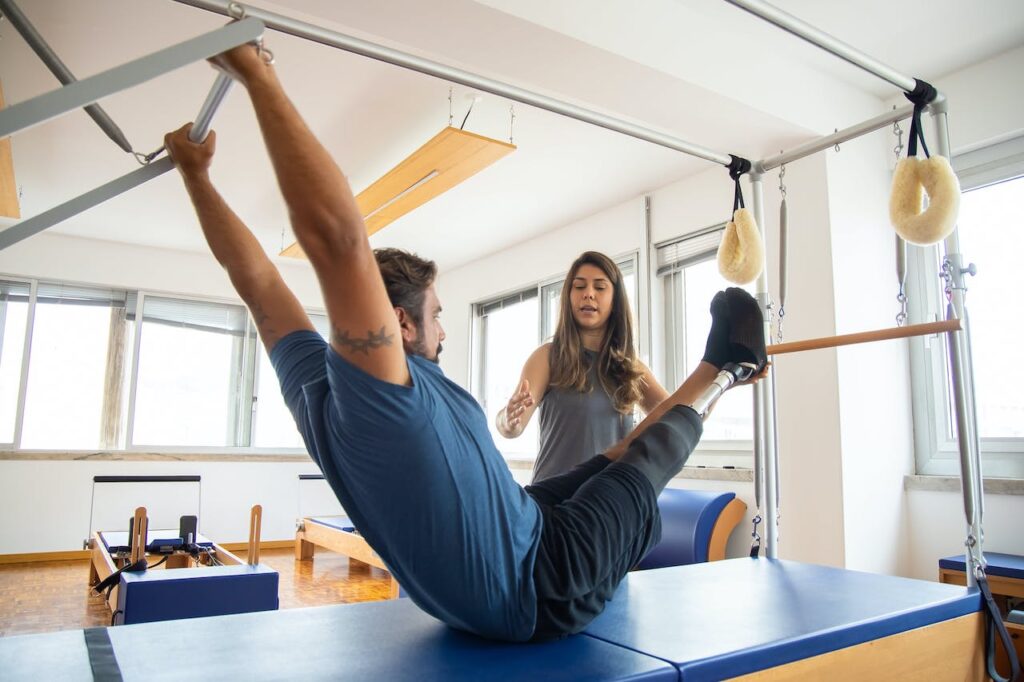
Whether your physician refers you to physical therapy or you choose to go alone, your first appointment will involve an initial evaluation. This includes a discussion with your therapist about your symptoms and pain levels, your limitations, and your goals for physical therapy.
Wear comfortable workout clothes that allow the therapist to move around quickly (tank tops work well for shoulder pain, and shorts for knee or hip pain). This is a hands-on session, so be prepared.
Initial Evaluation
During your first session, your physical therapist will sit down with you and talk through what caused your pain or injury. This Q&A-style conversation is often cathartic and allows you to express your emotional experience.
Afterward, the physical therapist Davie FL, will perform an examination, looking at posture, movement patterns, mobility, muscle strength, soft tissue flexibility, balance, and other factors. They will also palpate the affected area to see if there are any lumps or bumps that need further evaluation.
It’s a good idea to wear comfortable clothes for your session, like T-shirts and shorts. Avoid tight-fitting jeans and other restrictive clothing that can make it hard for the physical therapist to reach and touch the treatment area. It may also help to bring your imaging results, such as X-rays, to your appointment, experts say. If you need help with what to bring, contact the physical therapy clinic beforehand.
Assessment
Whether your doctor refers you to physical therapy or you consult a therapist on your own, the first session will include an initial evaluation. This part of your visit to Davie, FL, will help the therapist determine the best course of treatment to help reduce pain, improve movement and function, and aid in your recovery.
The therapist will ask about your pain or symptoms and how they affect your daily life. The therapist will also take measurements and perform a physical examination. Depending on the injury, this could include measuring how much your joints move or assessing strength.
It’s a good idea to wear clothing that allows the therapist to access the area being treated. Loose, comfortable clothing that allows you to move around, like sweatpants or a T-shirt, will work well. Avoid wearing tight jeans or other dress that limits movement and flexibility. Also, bring any documents or imaging results related to your injury.
Treatment
After an examination, the physical therapist will develop a treatment plan. They may start treatment during the session and give you a set of exercises to practice at home (and likely write them down for you) with instructions on how often to do each exercise and in what order. Be sure to follow the plans precisely at home — most of the benefit from physical therapy comes from sticking to your routines.
During your treatment sessions, ask questions and pay attention. A PT should be able to explain what happens during each movement and why it is beneficial. They should also reassess your progress regularly and make changes to the plan as needed.
Red flags to watch out for include disregarding pain or discomfort, failing to address your injuries’ root causes, and missing appointments without canceling in advance. (Missed sessions will slow your recovery.) It would help if you were prepared for sessions to seem challenging as your body adapts to new movements.
Follow-Up
Once you’ve been discharged from physical therapy, it’s essential to keep in touch with your therapist. Whether you have questions about an exercise or need help with a new problem, your therapist will be able to guide you.
During your follow-up appointments, you’ll check in with your therapist to report how you are doing. Then, they will perform hands-on and tool-assisted therapies to improve joint and tissue motion to facilitate healing.
During your follow-up sessions, you should bring comfortable clothing that allows you to move freely. For example, wear a tank top and sports bra for shoulder evaluations or pants with a good range of motion if your therapist evaluates lower body injuries. For the best results, stretch before and after each session.
This will prevent muscle stiffness and prepare your muscles for your PT workout. Lastly, be sure to attend all of your follow-up appointments. Missing appointments can set you back in your recovery.






